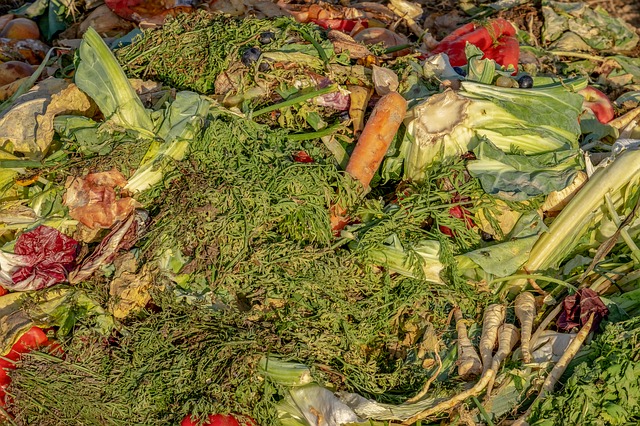Food is too good to waste, and yet one third of food produced for human consumption is wasted or lost globally.
In the US, we waste 40% of all our food – that’s nuts! Food waste might seem like something small, but it adds up to a massive… and I mean MASSIVE impact.
If food waste were a country, it would be the third largest emitter of greenhouse gasses behind the US and China.

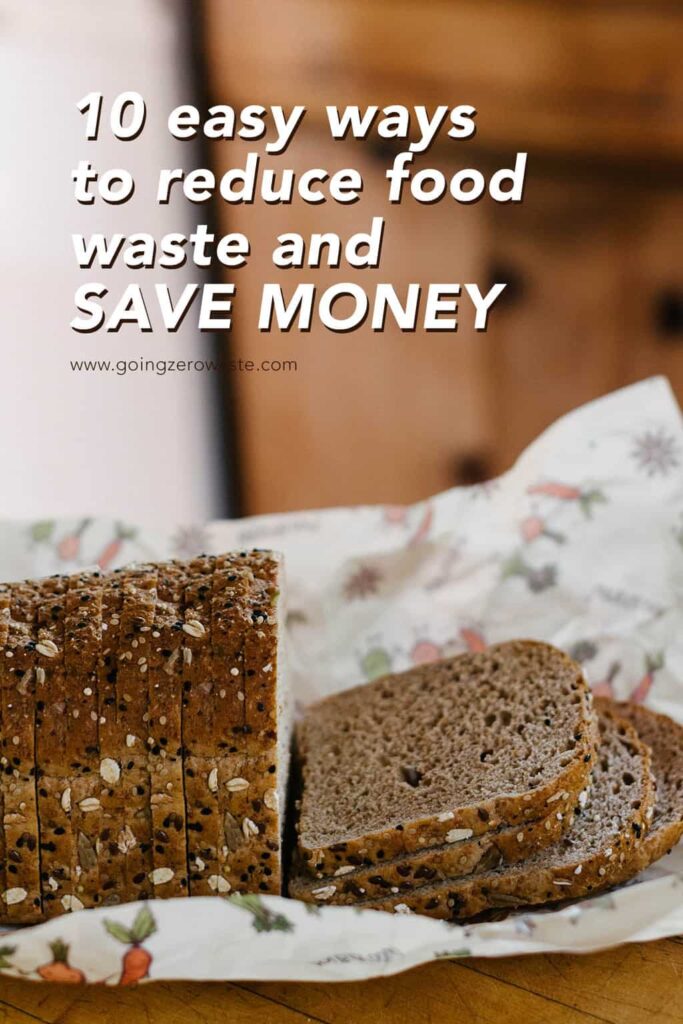
Obviously, not all food waste is the consumer’s fault as a lot of this responsibility falls to the manufacturers. When talking about food waste we can talk about it in two different terms. According to FCRN, “Food loss is “the decrease in edible food mass throughout the part of the supply chain that specifically leads to edible food for human consumption”, including the production, post harvest and processing stages. Food waste is food loss that occurs “at the end of the food chain”, i.e. during retail or final consumption.”
While there’s a not a ton we can do about food loss, there’s A LOT we can do to mitigate food waste. In this blog post, I’m going to go over 10 things you can personally do to reduce food waste. But, I also want to shine a light on a few of the issues we experience with food loss. Especially my favorite and most infuriating *fun party fact* – don’t I sound like a joy to invite over to parties?
Our food has insane beauty standards. Yep.
It’s not just magazine covers that are projecting unrealistic and unattainable versions of beauty – we do it to our produce too.
For instance, peppers have to stand. If a pepper is too long or has a strange crease that prevents it from standing up straight, it’s rejected.
There’s an infuriating video from War on Waste, where bananas that are slightly too big or too small are just thrown away. Bonkers, right!?
That’s just one of many food loss problems, but let’s not spend too much time what we can’t fix and focus on what we can!
1. take inventory:
How often do you go to the grocery store without checking what you already have in your fridge first?
Sit down and take five minutes to make a quick meal plan. You can check out my blog post on How to Make a Five Minute Meal Plan.
Don’t worry. I hate meal planning too.
This isn’t your normal type of meal planning – it’s Cool Meal Planning!
This isn’t a meal plan where you write down everything you’ll eat Monday-Friday, it’s more of a road map to ensure you don’t waste food.
I’m just asking you to open up your fridge and your freezer and look at your pantry before you go grocery shopping.
If you open up the fridge and say “hey, I’ve got a tomato, a couple carrots and some broccoli that needs to be eaten”, then you can think of a meal or two for the beginning of the week where you can use those up.
You also know now that you don’t need to buy tomato, carrots or broccoli which prevents you from buying duplicate items.

2. shop smarter:
I have a tendency to buy more food than I need. Anyone else?
I somehow always overestimate the food I’m going to eat and buy enough for 1-2 extra meals. Then I feel guilty because the produce is starting to wilt, and I’ve got to find a way to creatively eat it or preserve it.
Thankfully, I’ve gotten a lot better about this. When I’m at the grocery store I try to put back 15% of my cart.
I really try to examine what I actually need because if I do run out of something I can always pop back to the store.
If you’re reading this blog post the month it came out, I don’t really follow this advice since food shortages have been common, and I’m trying to avoid going to the grocery store frequently.
I’m not hoarding food by any stretch of the imagination, but I am buying a little extra food.
One of my favorite ways to preserve foods is to use my freezer! You can get all my tips in the post 5 Tips for Utilizing Your Freezer to Prevent Food Waste.
If you’re reading this blog post a year or two in the future, then I think this advice absolutely applies!
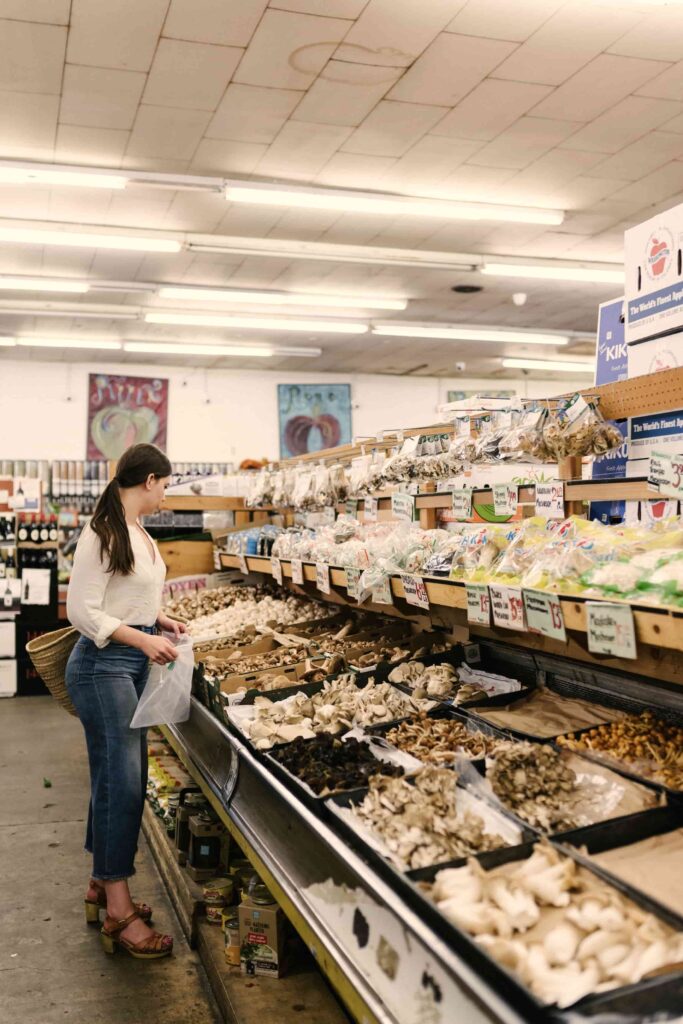
3. store it right:
Once you get home from the store, you’re going to want to make sure that you’re storing your foods properly!
This is KEY to making your fruits and vegetables last as long as possible! Be sure to check out my plastic-free storage guide.
I am going to be updating that blog post to make it easier to read and even more robust covering all different types of fruits and veg!
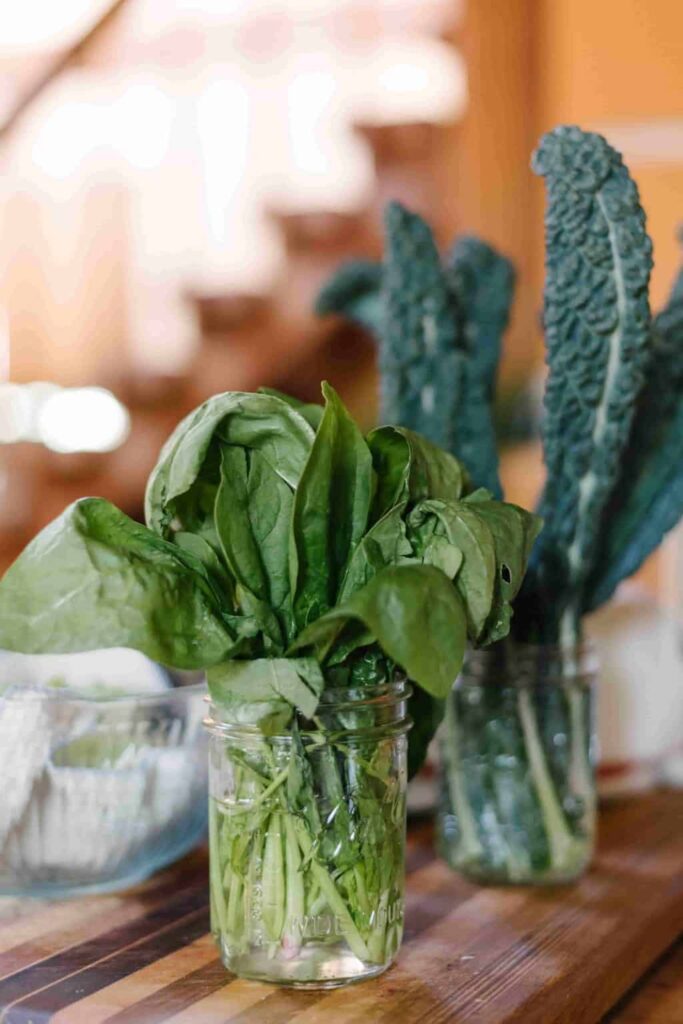
4. ignore those dates:
You can pretty much ignore the “best by, sell by and use by” expiration dates. Think about it, it’s impossible for a manufactuerer to know the EXACT day something is going to go bad.
I think the funniest example of this is honey.
Honey has an expiration date on it which is laughable because honey found from ancient Egypt, 1,000s of years ago is still perfectly fine to eat.
Besides, conditions change in everyone’s home between humidity, temperature, sunlight, etc. so the producers of many of these products just make an educated guess.
Things could easily go bad before or after that date. The only real way to tell is using your best judgement. Does it look bad, smell bad or taste bad? If so, it’s probably bad – the date has nothing to do with it.
Here’s what those labels really mean:
- Sell by: Tells the store how long to display the product for sale. Not a safety date.
- Use by: Last date recommended for use when the product is at peak quality. Not a safety date except when used on infant formula.
- Best by: Indicates when product will be of best flavor or quality. Not a safety date.
See? Definitely not as scary as you thought! And, no reason to throw something in the trash just because it said it went “bad” yesterday.

5. save it:
If there’s something on your plate you can’t finish, don’t be shy to ask a family member if they want it instead.
If not, save it for later instead of throwing it away.
The same goes for eating out: If there’s food you can’t finish on your plate, be sure to take it home!
I like to bring a reusable container with me when I know I’ll be dining out, just in case I have leftovers.
Check out my blog post 8 Ways to Store Food Without Using Plastic for a full guide on how to save leftovers!
6. prep your food:
When I get home from the grocery store I like to spend a few minutes prepping my fruit and vegetables.
This is one of the secrets to getting easy plant-based meals on the table F-A-S-T. For more tips you should check out my blog post Plant Based, Zero Waste: What I Eat in a Day.
There’s just something about getting things chopped and ready for snacking or ready to throw into a pan makes me 95% more likely to actually eat the food I bought from the grocery store than cave and go out to a restaurant. (or worse – order takeout!)
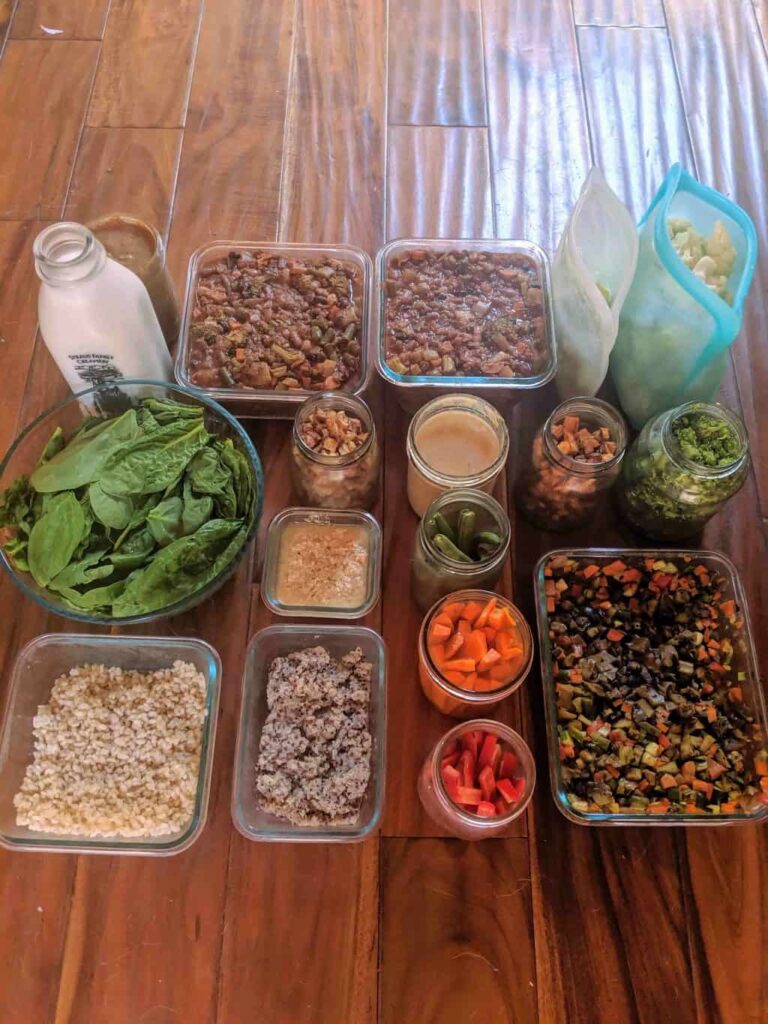
7. one bad spot doesn’t equal a rotten banana:
To be perfectly honest with you, if something has a few specks of mold on it like a bell pepper or tomato – I’m still going to eat it.
I cut the black spots off, and eat the rest of the fruit or vegetable.
I don’t have any problem doing this, and I’ve never gotten sick. I’m telling you this so you know how I think, but upfront I’m not a doctor so you should use your best judgement.
When my produce starts to shrivel or gets a few black spots I do try to cook it on high heat to help kill anything off.
I think the moral of the story is similar to the one from expiration dates – just use your best judgement!
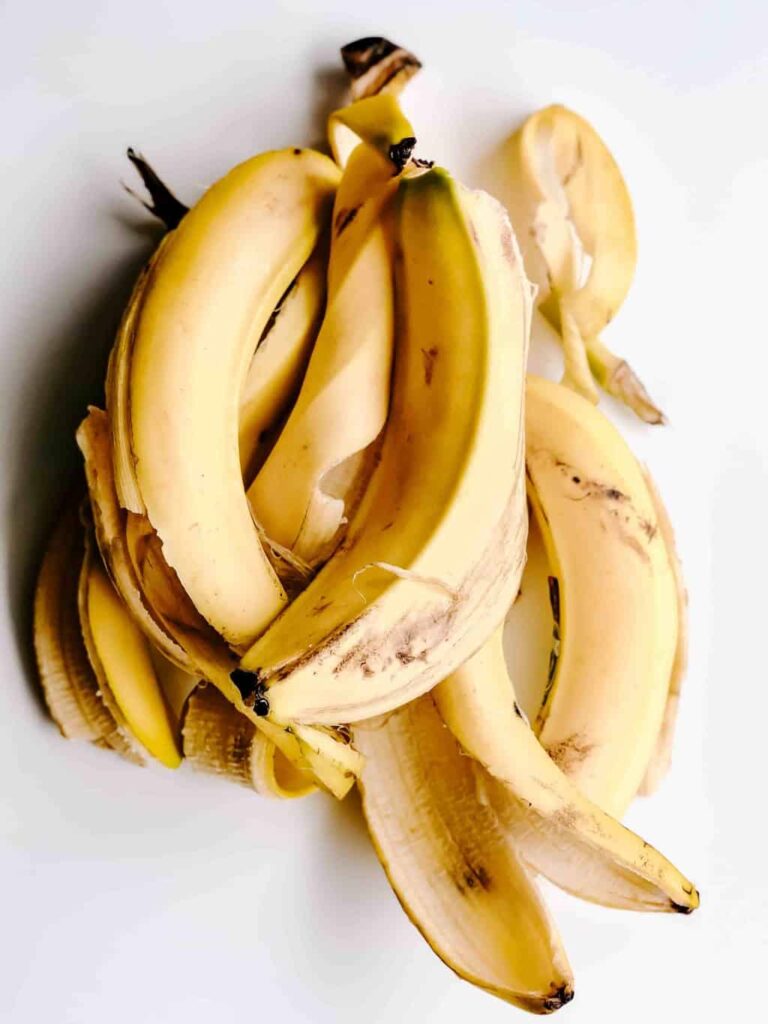
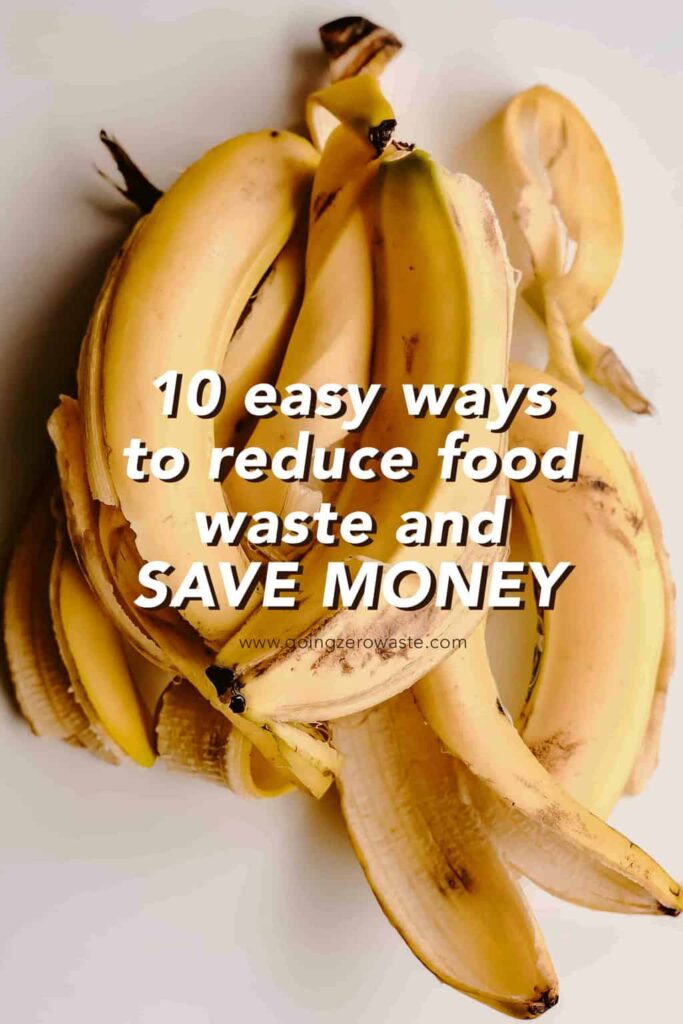
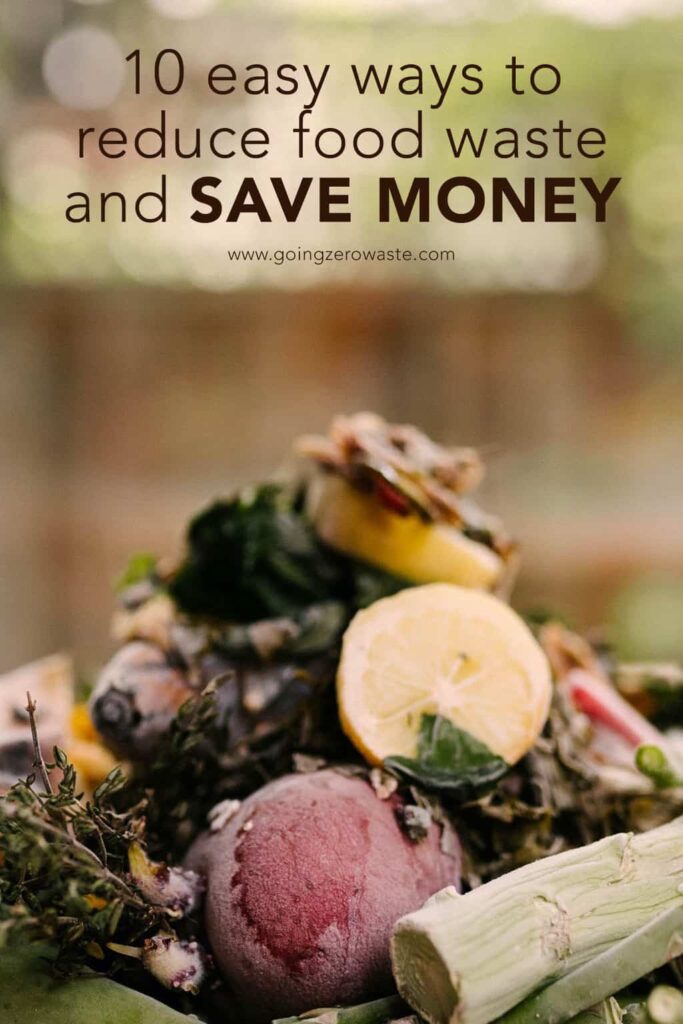
8. use your scraps:
Another great way to reduce food waste is to cook with your scraps.
There are so many parts of a vegetable that often get thrown out but are perfectly edible, like carrot tops and broccoli stems. Carrot tops can become pesto and broccoli stems can become slaw.
Here are a few other ways to cook with scraps:
- Make zero waste vegetable broth from food scraps.
- Use herb stems in soups, stews and salads instead of discarding them.
- Add celery leaves to your next soup for extra flavor.
- Save pumpkin seeds and roast them later.
- Cook beet tops into a delicious veggie stir fry.
- Make salad from herb stems, carrot tops, radish tops and beet tops.
For more ideas and recipes, check out my book 101 Ways to Go Zero Waste!

9. regrow your scraps:
Did you know many of the foods you buy from the grocery store can be regrown?
You can grow lemons from lemon seeds, and a mini-tree from an avocado seed. But, I don’t think either will bear fruit.
I’ve had success growing things lettuce, celery, green onions and more! You can check out my blog post How to Grow and Edible Windowsill Garden.
One of my favorite things to grow is green onions. When start regrowing your scraps, it’s best to start with a cup of water.
Place the stalk of your romaine or the ends of your onions in the cup of water and change it every every day or every other day.
The cup doesn’t have to be completely full. You just need enough water for the base of the plant to be covered by an inch.
The scraps will start to regrow and once the roots sprout, you can transfer to a pot of soil.
Just make sure the pot has drainage! If it doesn’t, your plants will probably die. I learned this the hard way….

10. compost:
The average US household produces 650 lbs of organic trash a year, but most of that is landfilled.
In fact, 60% of our landfills are full of organic matter because many people think their food scraps will return to the Earth, but they won’t!
Landfills are designed for storage – not decomposition.
There’s no oxygen in a landfill so organic matter can’t break down creating a limbo state that releases methane. On average, methane is 30x more powerful than your average greenhouse gas like CO2.
And, 16% of ALL methane emissions come from landfills.
An easy way to fix this is to start composting, and as a bonus, you’ll reduce your trash by at least 50% with this one swap.
RELATED: 3 Easy Swaps to Reduce Your Waste by 80%
As you read that you probably thought, “I’d like to compost, but I just can’t!” So, before you make any decisions, I’d love for you to do a bit more digging.
Composting is WAYYYY easier than you think. I promise!
It doesn’t smell, it won’t attract rodents, and there are literally 20+ different ways to do it so you’re bound to find the perfect method for you.
I’ve gone ahead and separated them into two separate blog posts. If you have a backyard and you’re feeling up for the challenge check out The Ultimate Guide to Backyard Composting.
If you live in an apartment or you’re looking for something very, very low-maintenance check out The Fool-Proof Guide to Composting in an Apartment (even if you don’t have a balcony).
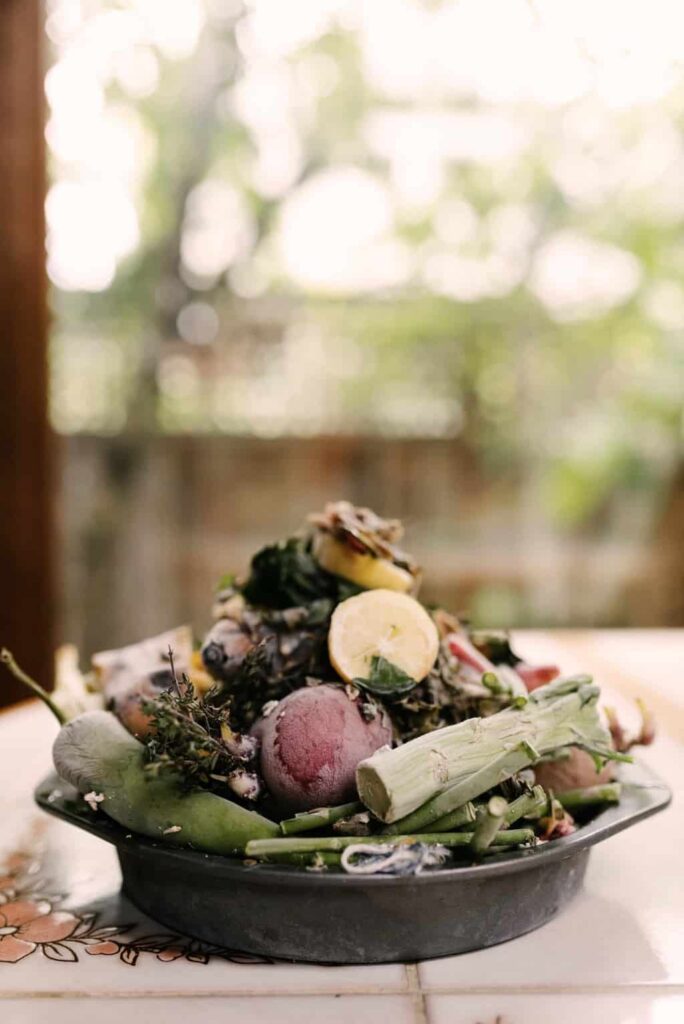
The post 10 Easy Ways to Reduce Food Waste at Home appeared first on Going Zero Waste.

